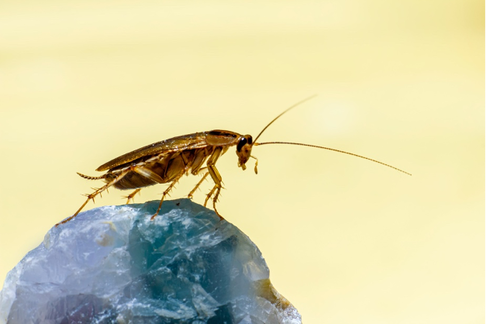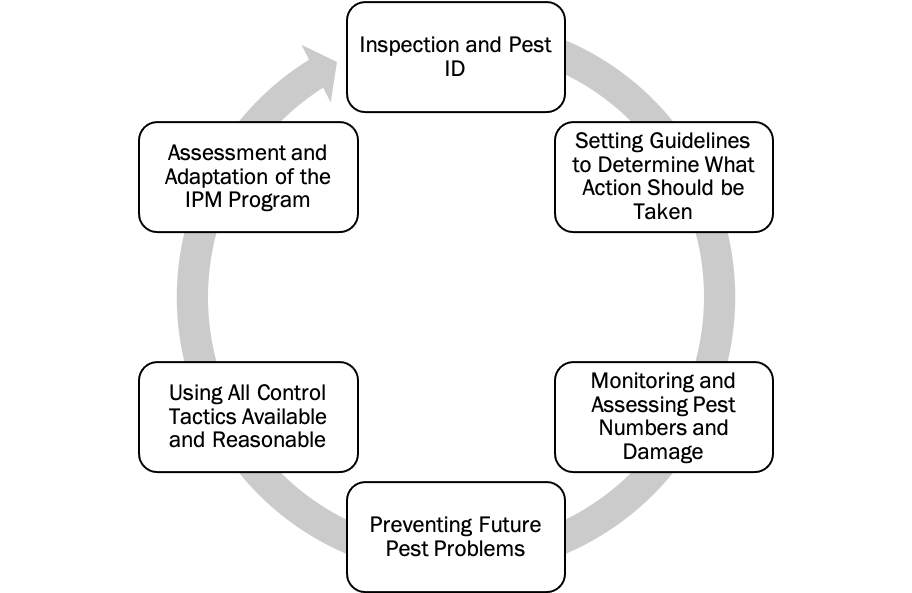|
We talk about integrated pest management (IPM) a lot here at Bug Lessons. However, what is IPM? What is science-based pest control? Is there a difference? To answer these and even more questions, we will publish a multi-part series on the topic! Be on the lookout for the “Integrated Pest Management Series,” coming the second week of every month. Read on to start learning about pests, IPM, and how it all works. IntroductionPeople create farms to produce food, they modify landscapes for enjoyment and leisure, and they build structures to protect themselves from the elements. Unfortunately, pests can damage all of these creations and if left untouched, wild ecosystems. Additionally, pests spread germs that can make people and animals sick. Because pests impact our lives directly and indirectly, people spend a lot of time and money trying to keep these creatures at bay. And WOW, managing pests is no easy task. In fact, professionals often use the term “manage” rather than “control” when it comes to pests because killing every single individual often proves impossible (at least without causing significant damage to the environment). As result, the goal of many integrated pest management programs is managing a pest, or keeping the population below a damaging level (i.e., some individuals will still exist). The alternate goal is eliminating a pest, i.e., completely eradicating the entire population. Both management and elimination are acceptable strategies for pest control professionals. Which one is chosen depends on the situation. Either way, an integrated pest management strategy is usually implemented.  Pests like German cockroaches can spread nasty germs throughout the environment. The microorganisms they transmit can be carried on their legs and bodies and passed to people. Reducing disease transmission is an important benefit of integrated pest management in urban settings. (Image Credit: Erik Karits, Image Source: Unsplash) What IS IPM?Integrated pest management, or IPM, uses data and all tools available and reasonable to sustainably manage and control (not necessarily eradicate) pests. The U.S. government provides a more specific definition as, “a sustainable approach to managing pests by combining biological, cultural, physical, and chemical tools in a way that minimizes economic, health, and environmental risks.” The process is science-based, meaning folks use data to make the best decisions possible. IPM programs use information on pest biology, environmental data, and available technology to manage pests in a way that maximizes results while minimizing harmful impacts. Ideally, pesticides are only used after data shows there is a reason and need. By using IPM, professionals can reduce the amount of pesticide applied. Initially, scientists developed IPM for agricultural systems. Pesticide applications can be very costly and have unintended consequences on the environment. Once the negative effects of pesticide overuse were understood, integrated pest management was developed to help offset such effects, as well as reduce the cost of pest control. As a result, IPM was born and provides the following benefits:
Now, professionals use many of the principles of IPM to manage insects in other settings, including urban environments, too. There can be some major differences. For example, traditional IPM programs accept that some pests will be present in a field. However, in a home, what is an acceptable number of bed bugs? (The typical answer is ZERO!) So, while the specifics of a program might look different for bed bugs (urban) versus boll weevil (agricultural), most IPM plans contain the following critical components:
Final ThoughtsStudies have shown that using IPM can reduce the amount of chemical needed to manage a pest population while still achieving excellent results. For more information on the implementation of IPM in various settings, check out the National Roadmap for Integrated Pest Management, which aims to increase adoption of IPM in the U.S. An IPM program can be complex and requires many different parts. However, the benefit of IPM to people and the environment is worth tackling the complexity. To help everyone achieve the best results, Bug Lessons will release a series of blogs on this topic, including taking a deep dive into all of the steps above. The goal of this series is empowering both professionals and consumers with the knowledge needed to sustainably manage any pest.
0 Comments
Your comment will be posted after it is approved.
Leave a Reply. |
Bug Lessons BlogWelcome science communicators and bug nerds!
Interested in being a guest blogger?
Archives
November 2023
Categories
All
|
